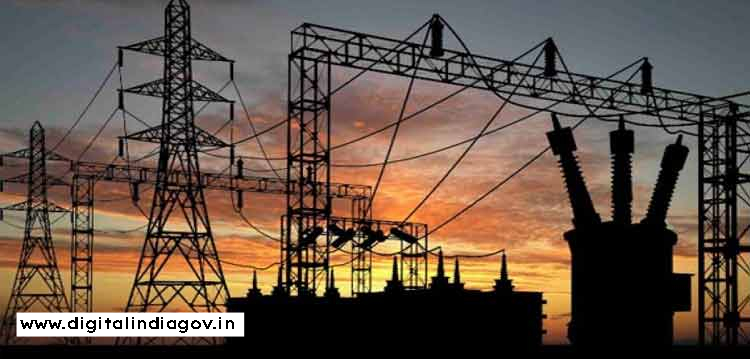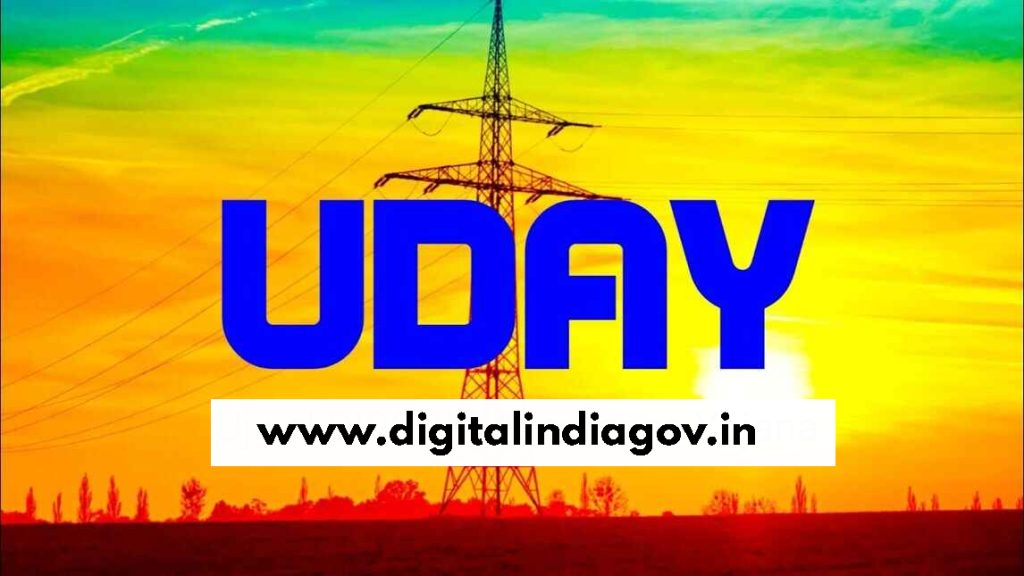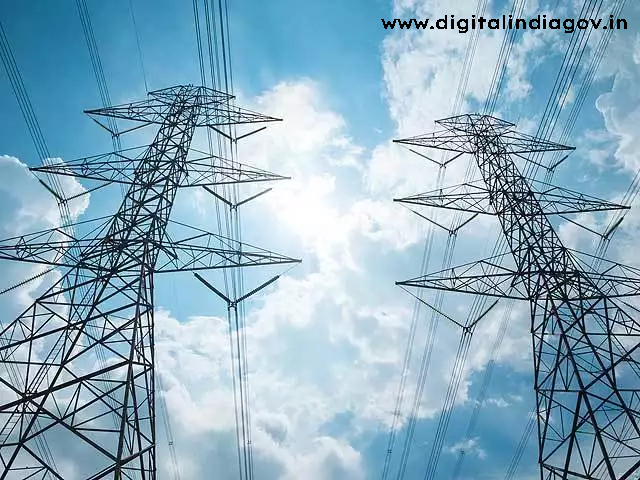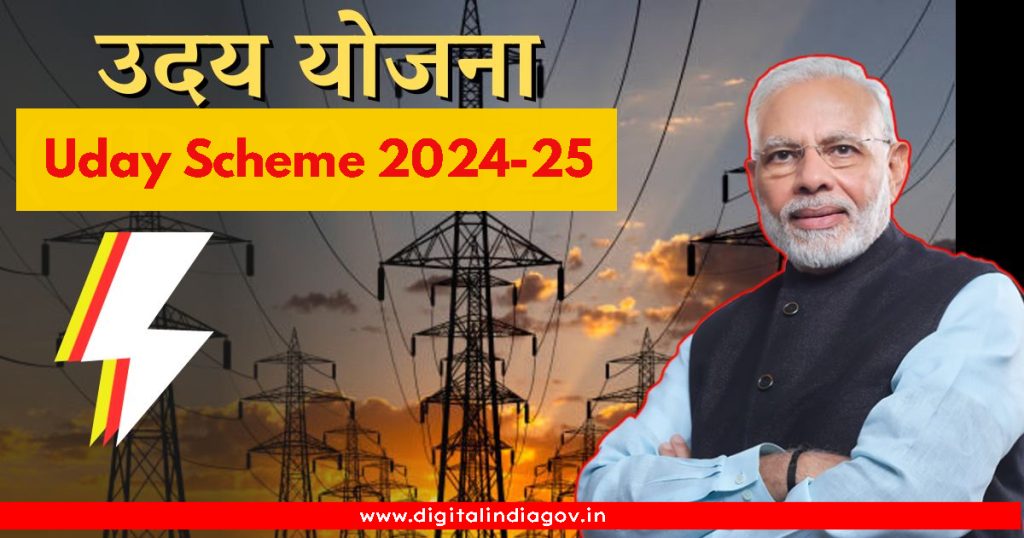Uday Scheme:- On November 5, 2015, the Indian government introduced the Ujwal Discom Assurance Yojana, often known as the UDAY Scheme, to assist state-owned Power Distribution Companies (DISCOMs) in their operational and financial recovery. It seeks to give everyone access to reasonably priced, round-the-clock power as well as a means of generating money and cost savings for state DISCOMs. We will talk about the “UDAY Scheme” and discover more about the Ujwal DISCOM Assurance Yojana in this post, including its goals, characteristics, advantages, difficulties, future directions, and more.
Contents
Latest News
The Union Cabinet authorized the results-linked and reform-based Revamped Distribution Sector Scheme in June 2021. By giving DISCOMs conditional financial assistance for supply infrastructure strengthening, the initiative seeks to increase the operational effectiveness and financial stability of all DISCOMs/Power Departments, with the exception of private sector DISCOMs.
Goals of the Programme:
- by 2024–2025, to close the ACS–ARR gap.
- to cut India’s AT&C losses to 12–15% by 2024–2025.
- to develop the institutional capacity of contemporary DISCOMs.
- To create a financially stable and operationally effective Power Distribution Sector in order to enhance the quality, reliability, and affordability of the power supply to consumers.
What is the UDAY Scheme?
Ujwal DISCOM Guaranteed Yojana is called UDAY. Introduced in 2015, it’s a government-funded program. Its goal is to strengthen the financial standing of India’s electricity distribution firms, or DISCOMs. The program’s objectives are to lower aggregate technical and commercial (AT&C) losses, boost operational effectiveness, and draw in outside capital for the power industry.

Also Read:- Pradhan Mantri Dhan Laxmi Yojana
Quick Glance on the UDAY Scheme
Here are some key facts and figures about the UDAY Scheme for the UPSC Exam:
| UDAY Scheme | |
| UDAY Scheme Full Form | Ujwal Discom Assurance Yojana |
| First state to join the UDAY Scheme | November 2015 |
| UDAY Scheme launched by | “Ministry of Power, GOI” |
| UDAY Scheme Type | Centrally Sponsored Scheme |
| UDAY Scheme Aim | To strengthen the operational and financial efficiency of state DISCOMs. |
| First state to join UDAY Scheme | Jharkhand |
Objectives of the UDAY Scheme
The UDAY program seeks to:
- Cut the 22% AT&C loss to 15%.
- By 2018–19, close the difference between ACS and ARR.
- Enforce transformer and meter upgrades as well as smart metering to increase operational efficiency.
- Adopt energy-saving strategies, such as encouraging the use of LED lights, fans, air conditioners, and agricultural pumps that use less electricity.
- In the power distribution industry, lower electricity expenses, interest payments, and power losses.
- DISCOMs should operate more efficiently to deliver sufficient power at reasonable prices.
- Offer incentives to the top achievers to entice states to join the program.
Features of the UDAY Scheme
The following are the UDAY scheme’s features:
- In order to turn around their finances, the states will take on 75% of the debt incurred by DISCOM as of September 30, 2015; 50% will be absorbed in FY 2015–16, and the remaining 25% in FY 2016–17.
- States will issue non-SLR bonds, including SDL bonds, to acquire this debt and transmit the proceeds to DISCOMs through a combination of grants, loans, and equity.
- These bonds will mature in ten to fifteen years, with a possible five-year moratorium.
- These bonds will have an interest rate of G-sec plus a 0.5% spread, with non-SLR bonds subject to an extra 0.25% spread.
- The state’s budget deficit will not be computed with the borrowing for this purpose included.
- We will manage the remaining 25% of the debt in order to attain financial stability.
- It could be released as DISCOM bonds with state backing.
- Banks and other financial institutions may also re-price it at an interest rate that is no higher than the bank base rate plus 0.10%.
- Additionally, states will bear the following graded trajectory of accountability for future DISCOM losses:
- 0% of losses for 2014-15 and 2015-16.
- 5% of losses for 2016-17.
- 10% of losses for 2017-18.
- 25% of losses for 2018-19.
- 50% of losses for 2019-20.
- Remaining losses will be covered by State bonds or DISCOM bonds guaranteed by the State Government, in accordance with the ultimate loss trajectory decided upon in consultation with the Ministry of Power.
- For the seizure of unpaid CPSU dues, Jharkhand and Jammu and Kashmir are subject to special provisions.
How does the UDAY Scheme work?
The UDAY Scheme provides a two-year exemption from Fiscal Responsibility and Budget Management (FRBM) constraints for state takeover of DISCOM loans, thereby incentivizing states:
- a rise in the supply of domestic coal
- Justification of coal connections
- allowing for generous coal exchanges
- If states meet the operational milestones for the Ministry of Power and Ministry of New & Renewable Energy programs, they will receive additional or priority funding as well as access to coal connections at the previously established pricing.
- In addition, by March 31, 2016, the Participating States and DISCOMs must sign a Memorandum of Understanding with the Indian government and take up half of the debt that was due as of September 30, 2015.

Also Read:- Delhi Nursery Admission
Benefits of the UDAY Scheme
- lower electricity bills with the following centralized support:
- Lowering coal prices and expanding the availability of coal domestically
- Availability of crushed and cleaned coal
- Extra coal at set rates
- coal links are distributed at fixed pricing.
- The rationalization of coal linkage and the accessibility of coal-swapping facilities
- Interstate transmission line completion more rapidly
- Purchasing power through open, competitive bidding
- Additional financing for key initiatives is offered by IPDS, DDUGJY, and other initiatives.
Impact of the UDAY Scheme
Among the effects of the Uday Scheme are the following ones:
- Sound financial DISCOMs
- An increase in power demand
- Enhancement of generating plants’ PLF
- Reduced value of strained assets
- Accessibility of less expensive funding
- A rise in capital expenditure
- Growth of the Sector for Renewable Energy
Why is the UDAY Scheme needed?
- The Power Distribution Companies (DISCOMs) in India have been facing financial losses and debt due to their provision of electricity at prices far lower than their actual costs.
- The inability of these financially challenged DISCOMs to deliver adequate power at reasonable costs hinders both the general economic growth and development as well as the quality of life.

- In addition, power distribution inefficiencies, such as large power transmission and distribution losses, have increased the financial strain on DISCOMs, which have been heavily indebted to banks in order to maintain operations.
- In order to support these DISCOMs and lessen their transmission losses, the Union Government finally developed a financing plan that amounted to 2.75 lakh crore (US$ 49.60 billion) between 2011–2012 and 2014–2015.
Current status (Accomplishments) of the UDAY Scheme
- As per the terms and conditions of the UDAY program, state governments were required to implement operational improvements like mandatory smart metering for large customers, upgrades to distribution infrastructure, and energy-efficiency measures in order to reduce AT&C losses to 15% and the ACS-ARR gap to zero by 2018-19,24.
- The AT&C loss percentage is currently 24.54 percent, despite a minor decline from 23.96 percent in 2015–16 to 22.03 percent in 2018–19 Turning Around the Power Distribution Sector Introduction.
- From 0.54/kWh in 2015–16 to 0.72/kWh in 2018–19, the ACS–ARR difference widened.
- To support the sustainability of discoms, the Centre did, however, unveil a new initiative in the 2021–2022 Budget.
- A revised, reform-based, result-linked program for the power distribution industry will also be implemented, requiring a five-year investment of 3,05,984 crore.
- In exchange for financial gains, the program will help discoms build infrastructure, including feeder separation, pre-paid smart metering, system upgrades, and other things.
Challenges and Shortcomings of the UDAY Scheme
- Cash-strapped Discoms have so far been able to reduce their debt and overall AT&C loss thanks to the UDAY initiative.
- It hasn’t been able to handle cross-procurement and power-supply expenses, though.
- Additionally, customer mix and region have an impact on discom changes.
- Rajasthan, a sizable, widely dispersed state with a population that leans heavily towards rural areas, finds it difficult to enhance discom performance.
- Hilly states have also had trouble restructuring their discoms, especially those in the northeast.
- Significant obstacles include a constrained budget, unfavorable macroeconomic conditions, and limited state and discom capacities.
- In terms of the deployment of transmission infrastructure, the effectiveness of the central programs to reduce transmission losses has been only moderate.
- Still, the loss level has remained very high, mostly because of inadequate billing.
Way Forward
- India’s power sector reform history demonstrates that a universal solution is impractical due to the country’s vast size and diversity.
- While bringing in outside knowledge, new technology, and institutional frameworks will be important, they won’t be sufficient to further India’s power sector transformation.
- Discom privatization has often been seen as a way to increase sector efficiency as a whole.
- However, when the discom’s service region is more rural, privatization becomes more challenging.
- The Central Government has also made an effort to advance discom reform through programs like the Annual Integrated Ratings of State Power Distribution Utilities, in addition to these schemes.
- It is now imperative that the Indian power distribution sector attain operational efficiency, profitability, and preparedness for both future and increasing demand as well as technology advancements.

Also Read:- Jagananna Smart Town Scheme
FAQ’s
Q. When did the UDAY program begin?
Ans- On November 5, 2015, the Union Cabinet approved the start of the Ujwal DISCOM Assurance Yojana (UDAY) by the Ministry of Power, Government of India.
Q. Which states signed up for the UDAY program?
Ans- The first state to be included in the Uday plan was Jharkhand. Gujarat, Chhattisgarh, Andhra Pradesh, Karnataka, Rajasthan, Punjab, Haryana, Jammu and Kashmir, Himachal Pradesh, Madhya Pradesh, Uttarakhand, Telangana, and Assam are among the other states that have approved the proposal in principle.
Suggested Link:- Our Jharkhand
@PAY
